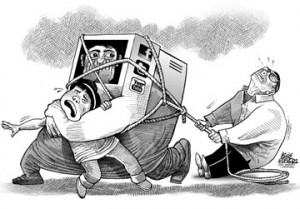
So far, reported incidents of cyber-bullying have mostly taken place in other countries like the United States where in extreme cases the victims have committed suicide. Here in the Philippines, teenagers are mostly confined to playing online games and updating Facebook accounts, and due to limited Internet access, are less engaged in social media as their foreign counterparts.
But make no mistake, cyber-bullying does take place in school and workplaces, where the unfettered atmosphere of the online world gives Netizens nearly absolute freedom to post their thoughts or “shoutouts” about anything under the sun.
Dr. Glenda Basubas, chairperson of the PMHA-Cebu chapter, said what makes cyber-bullying insidious is that perpetrators can conceal themselves from their intended victims. These are the “trolls.”
She cited an informal survey by the Stop Cyberbullying Philippines group taken in the last quarter of 2012 which showed that females engage more in cyber-bullying at 57 percent compared to males at 43 percent.
Insults, coupled with private, often compromising, photos are posted to humiliate the victim and give a sense of power to the perpetrator through Facebook, cell phone calls and messages. That an average of five patients are treated for cyber-bullying also showed that this is not a passing trend.
Instituting an anti-cyber bullying program in schools would show that administrators care about their students as a Big Brother or Big Sister in the real sense of the word and not just because they’re monitoring their online activities for questionable public displays of behavior similar to the bikini-scandal in St. Theresa’s College last year.
That a school like the University of San Jose-Recolletos has officials who found it in their hearts not only to forgive but to support one of its errant students, herself a victim of her own making in a sex video scandal, gives hope that other schools can take steps to preempt the phenomenon of cyber-bullyng.
Prevention is better than a cure so goes the axiom. Educating and sensitizing students about human dignity, the value of respect and building up their peers rather than intimidating or humiliating them will go a long way toward helping parents raise their children as well-adjusted, responsible adults.